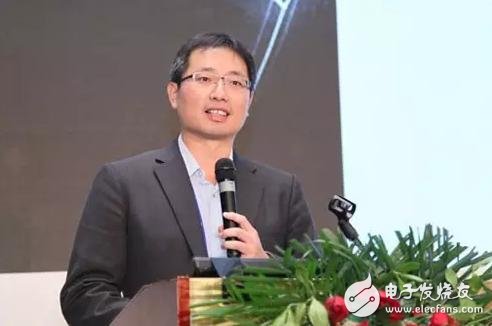At the "China·Beijing 2016 International Display Industry Summit Forum" jointly sponsored by China Optical Optoelectronics Industry Association Liquid Crystal Branch and Nikkei BP, Professor Huang Yibai, professor and vice president of optoelectronic engineering at Taiwan Jiaotong University, said that AR and VR are hot. But there are still many challenges. If anyone can achieve a VR display with deep and non-stunned eyes, at least get a $800 million investment from Ali. In the past two or three years, the concept of AR and VR has become very hot. It has not only become the focus of the technology giants' contending, but also has become the object of capital market advocacy. However, there are still many challenges in AR and VR. For example, AR and VR images change from passive viewing to active interaction, which requires innovation in sensors and interactive technologies. At the same time, because of the smooth interaction and high-definition image, AR and VR need more computing power, and put forward higher requirements for the performance of GPU and CPU. Of course, the display part is also an object of great concern in the industry. Huang Yibai pointed out that in view of the current VR display infrastructure, the field of view should be enlarged and the volume will increase. At present, many people are studying how to make VR and AR displays with small size and good angle of view. The first is to let the light hit from the side instead of projecting from above, which can increase the path of the light, enlarge the image, and the volume of the display can be made small. The second is the way of optical waveguides, but the image quality of this solution is not too good. In addition, there are other solutions, but the final form is to make contact lenses, which can ensure small size and ensure a large field of view. Compared with small size and large field of view, it is more urgent to improve resolution and brightness. Insufficient resolution will greatly reduce the experience of VR and AR. Huang Yibai said that resolution and brightness are the two major constraints of VR display. If the resolution is too low, the graininess of the display will be very obvious, and the user experience will feel uncomfortable. If it is an AR image with background light, it needs at least 1000 lumens in outdoor brightness. If the brightness is too low, the virtual image will block the real image, so many people are studying the problem of shadowing. In addition to dizziness, depth of field is also a cause of uncomfortable experience. Huang Baiyi believes that it is necessary to have a pair of eyes to integrate the depth. If it can achieve an AR display with deep and no dizziness, he feels that he can get Alibaba's investment of 800 million US dollars. It is understood that Ali Leap invested in Magic Leap has released a concept video, naked-eye 3D whales show the stadium. Huang Baiyi revealed that he was involved with the person in charge of Magic Leap. This video is an animated effect of post-production, not a real scene. If you want to achieve such an effect, you need multiple fiber-optic projectors, use lasers to hit the fiber, and sweep out a series of images to create a depth of field effect. In order to improve the experience, light field, holography and other technologies are also the realization path. Using a lens and a mirror to quickly change the focal length can also produce many planes, but requires a higher refresh rate, which presents a huge challenge in the display. Light field technology is also realized by using a lens array, but the resolution of the light field is not high, which restricts the possibility of commercialization. While holography can produce depth, there are currently chromatic problems in holographic technology, and the calculation of different colors is relatively large. Some people now question whether the current AR and VR will be as cold as the 3D display. Huang Yibai believes that AR and VR have some differences compared with 3D TV. In addition to the application in the field of electronic consumption, AR and VR can also be combined with education, tourism, shopping and other fields, and even have application value in some special fields. For example, the VR system can make a huge ophthalmic diagnosis and treatment instrument small. After wearing the VR device, the eye can receive the light signal and generate brain waves. The doctor can interpret the brain wave to determine whether the eye has diseases such as glaucoma and cataract. In addition, VR equipment can be used for brain nerve training. The light signal of VR equipment affects the brain. It has been confirmed that VR equipment can treat Alzheimer's disease and aging symptoms, and even some people with lower limb paralysis can stand up again through VR training. It is. The Intelligent Energy Storage System The Intelligent Energy Storage System,Large Photovoltaic Grid-Connected Power,Grid-Connected Power Generation System,Photovoltaic Grid-Connected Power Generation System Fuzhou Mei Li Cheng Imp&Exp Co., Ltd , https://www.mlc-solar.com